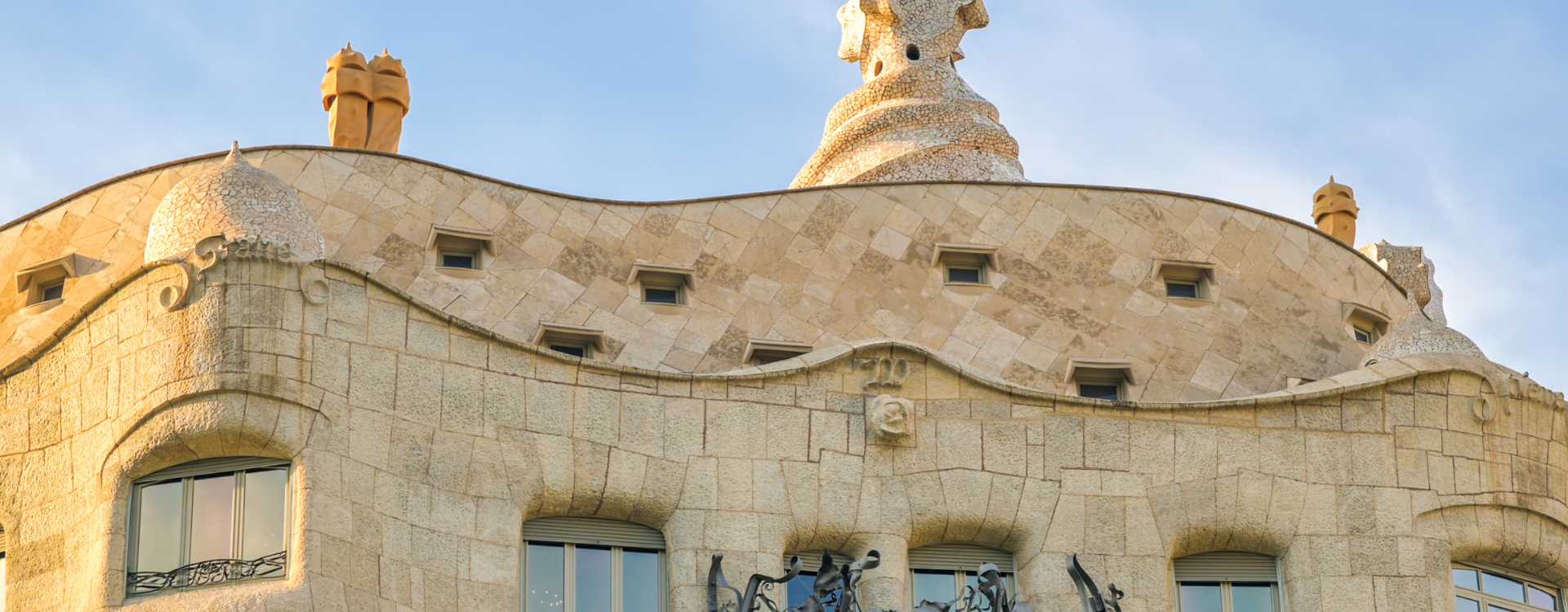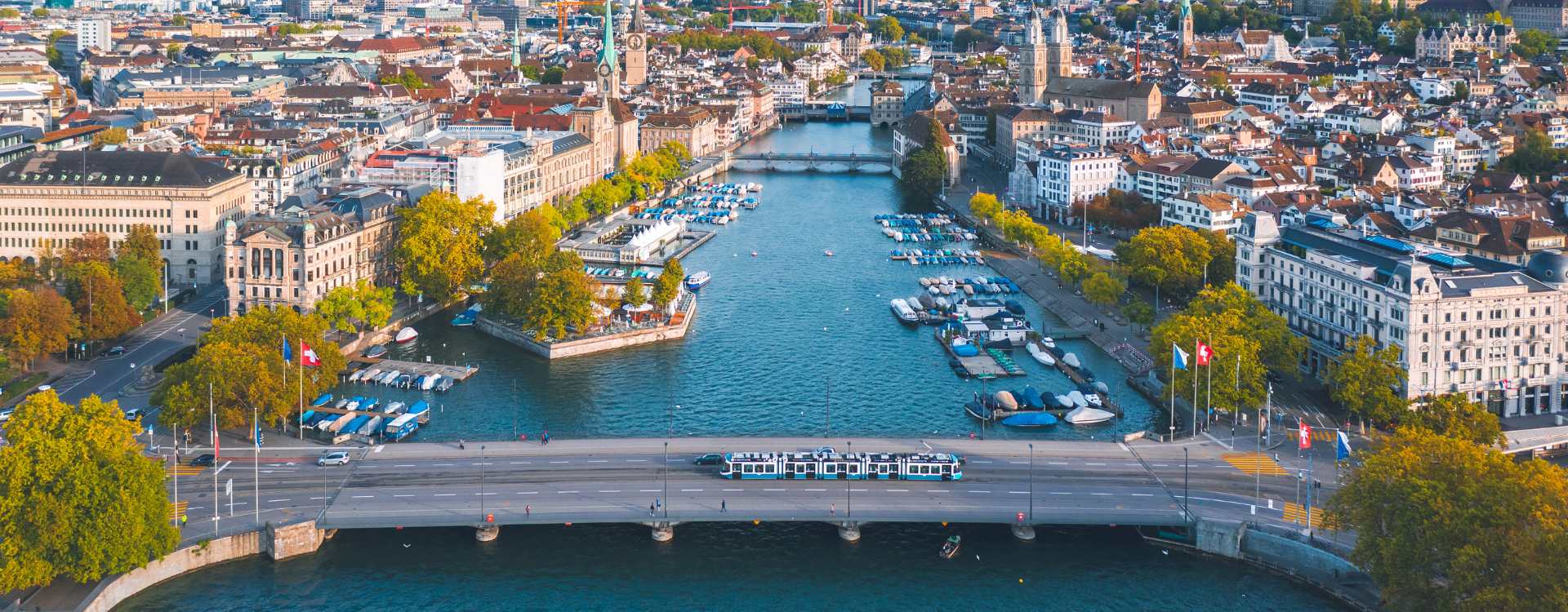
Weird & Unusual Buildings In Europe You Must See To Believe
Europe is a continent that prides itself on its rich tapestry of history, culture, and, noticeably, architecture. However, amidst its iconic historic castles and cathedrals lay a treasure trove of strange and unusual buildings that challenge the norm and boldly proclaim their uniqueness. These quirky structures, often born out of daring creativity and innovation, provide a whimsical contrast to traditional architecture, making European cities a fascinating playground for architectural enthusiasts who dare to explore beyond the ordinary.
Guggenheim Museum, Bilbao
The Guggenheim Museum in Bilbao is a masterpiece of modern architecture that has captivated visitors since its opening in 1997. Designed by the famous Canadian-American architect Frank Gehry, the building is a remarkable fusion of industrial and organic elements. Its unconventional shape resembles a giant sculpture of titanium plates and curves, reflecting the surrounding landscape and the river Nervión. The museum’s interior is equally impressive, with its vast open spaces, winding staircases, and expansive galleries providing a unique setting for displaying contemporary art collections. Gehry’s innovative approach to architectural design has propelled the Guggenheim Museum into a modern monument and a must-see destination for anyone visiting Bilbao.

Dancing House, Prague
The Dancing House in Prague, also known as the Fred and Ginger Building, is a remarkable and eye-catching piece of architecture. Designed by Vlado Milunić and Frank Gehry, this building stands out due to its unusual design, which resembles a pair of dancers. The building’s two towers slope in opposite directions, creating an illusion of motion. The Dancing House is now one of the city’s most popular tourist attractions, drawing visitors from all over the world fascinated by its unique and distinctive architecture. Milunić and Gehry have created a masterpiece with this iconic building, which intrigues and inspires people today.

Cube House, Rotterdam And Helmond
The Cube House in Rotterdam and Helmond is a masterpiece of architecture that captures the imagination of anyone who sees it. Designed by architect Piet Blom, this unusual building is composed of forty cubic houses tilted at an angle of 45 degrees. This unique design gives the impression that the houses are leaning on one another, creating a village-like atmosphere in the city’s heart. The bright yellow cubic places are not only eye-catching, but they’re also functional, as they each provide ample living space. Visitors can explore the interior of one of the houses converted into a museum and experience the innovative design firsthand. Despite its unconventional appearance, the Cube House is a testament to the ingenuity of architects who dare to break the mould and create something truly extraordinary.

Krzywy Domek, Sopot
The Krzywy Domek, also known as the Crooked House, in Sopot, Poland, stands out amongst the surrounding architecture due to its unusual design. The building was constructed in 2004 by Szotynscy & Zaleski, a Polish architectural firm. The design was inspired by fairy tales and illustrations by Jan Marcin Szancer and Per Dahlberg. The structure’s curved walls and warped roof give it the appearance of a whimsical, fairytale cottage. Visitors to the Krzywy Domek can explore the building’s quirky interior, which houses restaurants, shops, and offices. The unique architecture of the Krzywy Domek makes it a must-see attraction in the vibrant seaside city of Sopot.

Attribution: Danuta B. / fotopolska.eu
Waldspirale, Darmstadt
Have you ever seen a building shaped like a snail? Located in Darmstadt, Germany, the Waldspirale is an unconventional residential complex that has become a landmark infamous for its unique design. Designed by the Austrian artist Friedensreich Hundertwasser, the building is a striking example of his “organic architecture” style, emphasising natural shapes and vibrant colours. Rather than conforming to traditional geometric forms, the Waldspirale features curvaceous lines, colourful tiled roofs, and a mixture of floral patterns and mosaics. The overall effect is whimsical and almost otherworldly, a true masterpiece born from the creative genius of Hundertwasser.

Casa Mila, La Pedrera, Barcelona
Casa Mila, commonly known as La Pedrera, is one of the most remarkable buildings in Barcelona, thanks to the genius design and vision of the renowned Catalan architect Antoni Gaudí. The uniqueness of its architecture has made it a must-see attraction for tourists from around the globe. Its flowing lines, curved corners, undulating stone facade, and iron balconies are some of the features that lend Casa Mila its distinctive appearance. Unlike conventional buildings, Casa Mila’s design reflects Gaudí’s idea to create organic and natural spaces that fuse with the natural surroundings. The building’s unusual architecture has become an emblematic symbol in the Barcelona skyline, making La Pedrera a true masterpiece that continues to amaze and inspire visitors today.

National Library, Minsk
The National Library of Belarus in Minsk is a must-visit for bibliophiles and architecture enthusiasts. The architect Viktor Kramarenko designed this 23-story building, which opened to the public in 2006. This library’s striking rhombicuboctahedron shape makes it unique, symbolising the crystal of knowledge. The building is entirely clad in glass, and during the day, the sunlight reflects on the panels, creating a kaleidoscope of colours. LED lights illuminate the building at night, making it look like a glowing diamond. With over eight million items in its collection, which includes books in 62 different languages, the National Library of Belarus is the most extensive library in the country. So, whether you’re interested in checking out books or just admiring a stunning feat of modern architecture, the National Library of Belarus in Minsk is well worth a visit.

Hallgrímskirkja Church, Reykjavik
The Hallgrímskirkja Church in Reykjavik is an architectural masterpiece that stands out in the city’s skyline. Built-in the 20th century, Guðjón Samúelsson, a well-known Icelandic architect, designed this stunning church. The church’s design is unusual, drawing inspiration from Iceland’s diverse landscape. The church’s tower is reminiscent of the country’s glaciers and the crater of an active volcano. The church’s exterior is concrete, and its colour matches the rocks in the country’s landscape. The interior is equally stunning and features a grand organ that is one of the largest in the country. Despite its unusual design, the Hallgrímskirkja Church is a beloved landmark in Reykjavik and a must-visit for anyone interested in architecture.

Bosco Verticale, Milan
The Bosco Verticale, or Vertical Forest, located in Milan, is a mesmerising piece of architecture that will leave you in awe. Designed by the award-winning Italian architect Stefano Boeri, this residential apartment complex boasts a vertical forest that spans 27 storeys and is home to over 900 trees and approximately 20,000 plants. This unique design provides the residents of the Bosco Verticale with access to green space in one of the most densely populated cities in Europe. Integrating nature into architecture is not entirely new, but the scale of the Bosco Verticale is genuinely mesmerising. Whether you are an architecture enthusiast or just someone who appreciates green spaces, the Bosco Verticale is worth a visit.

Inntel Hotel, Amsterdam
If you’re ever in Amsterdam and looking for a unique place to stay, the Inntel Hotel is the place. Its unusual architectural design truly sets it apart from other hotels in the area. The building comprises a stack of peculiar, green-weathered houses, creating an abstract interpretation of traditional Dutch architecture. The design was created by Dutch designer Wilfried van Winden, who was inspired by the history and culture of Amsterdam. The hotel’s interior is just as intriguing, with each room offering its distinct charm. So if you’re a fan of architecture or want to stay somewhere out of the ordinary, the Inntel Hotel is worth considering.

Museu de les Ciencies Principe Felipe, Valencia
The Museu de les Ciències Príncipe Felipe is not your typical museum. Located in Valencia, Spain, this impressive structure boasts an unusual architectural design that catches the eye of every passerby. Designed by Santiago Calatrava, this science museum’s unique features are inspired by the ribcage of a whale. The building’s roof consists of white tiles that mimic the contours of the bones, and the exterior walls are made of sleek, blue-tinted glass panels. This architectural masterpiece is visually stunning and functional as it provides natural light and ventilation to the exhibits and visitors. The design symbolises the collaboration between architecture and science, reflecting the museum’s mission to inspire curiosity and creativity. With its exceptional design and interactive exhibitions, the Museu de les Ciències Príncipe Felipe is a must-visit destination for science, art, and architecture enthusiasts.

Recent Articles

Discover The Most Romantic Cities in Europe
Discover The Most Romantic Cities In Europe When it comes to romantic city breaks for couples, there is no place better than the enchanting cities of Europe. Many of the cities come with an element of romance. From the cobbled

Explore The Green Cities In Europe
Explore The Green Cities In Europe If you are considering heading into Europe to explore some of the many cities on offer, then you are spoilt for choice. However, consider heading to one of the many green cities supporting sustainable

Best Vegan Cities in Europe – Where to Eat & Explore
Best Vegan Cities in Europe – Where to Eat & Explore Europe has long been a melting pot of cultures, cuisines, and lifestyles, but in recent years, it’s also become a haven for those with a penchant for plant-based living.
